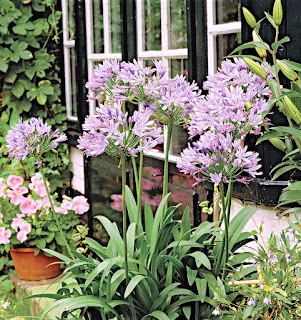How to create your own Tropical Garden
Tropical gardens are a growing trend in all over the world. With more and more people trying to replicate the lush feeling of their tropical Asian or the South Pacific island holidays. So the question is how can you create that tropical garden style in your home or backyard?
Lets start with a few examples then dive into analyzing tropical gardens and what defines them.
WHAT ARE THE ELEMENTS OF TROPICAL GARDEN DESIGN?
When you think of tropical gardens you think of lush tall palm trees and colorful foliage. Everything is always green and growing.
So what are the elements needed to create a tropical garden and how do they play a role in achieving the perfect tropical landscape design.
COLORFUL FOLIAGE
The first element is colour, colorful leaves and colorful flowers. Whether it’s the white flowers from a Frangipani or the red leaves of a Cordyline, tropical gardens are always full of colour. Typically colour will come from the leaves in tropical gardens
DIVERSITY
Tropical gardens are always packed with many plants. Each plant has its own characteristics such as leaf size, shape or growing height. By using a wide range of plants it creates depth and simulates nature.
WATER
Tropical gardens would be lost without the element of water. Water helps reflect light and creates a cool environment. When you think of the tropics you think of rainforests next to rivers or beaches. Plus the noise created by running water helps calm the senses and it can be visually stimulating.
SCULPTURES
Sculptures hidden amongst plants create intrigue and mystery, often replicating lost ruins found in rainforests.
PLANTING IN LAYERS
A tropical style garden is not dramatically different from other garden styles, the main difference is the density of the planting.
In a typical garden, you can clearly identify what layer each plant belongs to. It’s obvious what plants are groundcovers, shrubs or trees. The plants are given space to spread.
However, in a tropical landscape, the plants appear to compete for space. Plants are selected and placed to merge together.
The aim is to create a closely packed wall of lush foliage, which may look natural and unplanned but is actually very carefully thought out.
The most important planting layer is the upper canopy, which provides shade and shelter, creating a perfect microclimate for lower-growing plants.
Second to that would be the higher shrubs, which create a backdrop and are perfect for screening out unwanted views such as fences, walls or Neighbours. If this layer is used properly, you create a feeling of depth as if your garden extends beyond what's visible.
PLANTS TO USE IN TROPICAL GARDENS
Below are some plants that would work well in a tropical garden. They have been divided up into their layers. When selecting your plants make sure to use a variety from each layer.
UPPER CANOPY TROPICAL PLANTS
BAMBUSA MULTIPLEX
ARCHONTOPHOENIX ALEXANDRAE
CYATHEA AUSTRALIS
FICUS BENJAMINA STARLIGHT
MEDIUM SHRUBS
STRELITZIA REGINEA
CORDYLINE FRUTICOSA
RHAPIS EXCELSA
HELICONIA ANGUSTA SYN. HELICONIA BICOLOUR
TROPICAL GROUND COVERS
This is only a small list of plants and many more can work.
Here are a few tropical plant ideas
Fijian fire plant (Acalypha wilkesiana)
Vireya rhododendron (Vireya cultivars)
Giant elephant’s ears/giant taro (Alocasia macrorrhiza)
Elephant’s ears (Alocasia amazonica)
Medinilla (Medinilla magnifica)
Sago palm (Cycas revoluta)
Majestic palm (Ravenea rivularis)
New Guinea impatiens (Impatiens)
Prayer plant (Maranta leuconeura ‘Kerchoviana’)
Spindle palm (Hyophorbe verschaffeltii)
Variegated shell ginger (Alpinia zerumbet ‘Variegata’)
Zebra plant (Calathea zebrina)
Sacred Bali bamboo (Schizostachyum brachycladum)
Spiral ginger (Costus barbatus)
Dancing ladies (Oncidium varicosum)
Crotons (Codiaeum variegatum)
TIPS WHEN PLANTING
Plants perform better when they are planted closely together. The closer they are, the better they are at keeping humidity and cool air between them.
The aim of having them so close together is to allow plants to work together to create their own microclimate. This microclimate gives the plants you’ve chosen the perfect environment to strive in.
PREPARING THE SOIL
Tropical plants love organic matter and are found in areas with rich soil. Add lots of compost and organic soil to your garden beds before planting.
If you live in dryer areas or can’t water your plants on a regular basis, add water crystals when planting, which helps keep the soil moist in dry times.
Make sure to mulch heavily as this will decompose down over time feeding the soil. Mulch will also help retain moisture that tropical plants love.
TROPICAL PLANT MAINTENANCE











Comments
Post a Comment